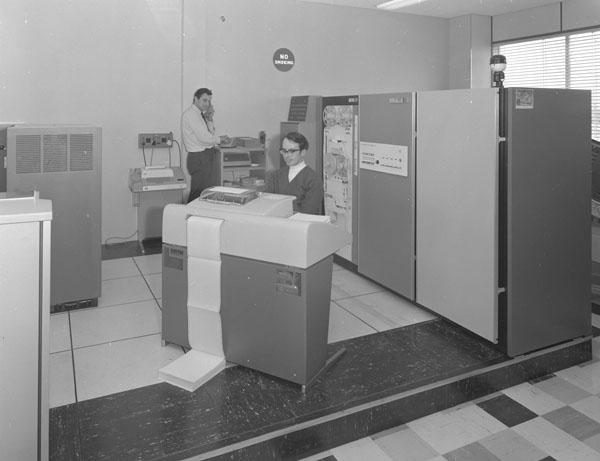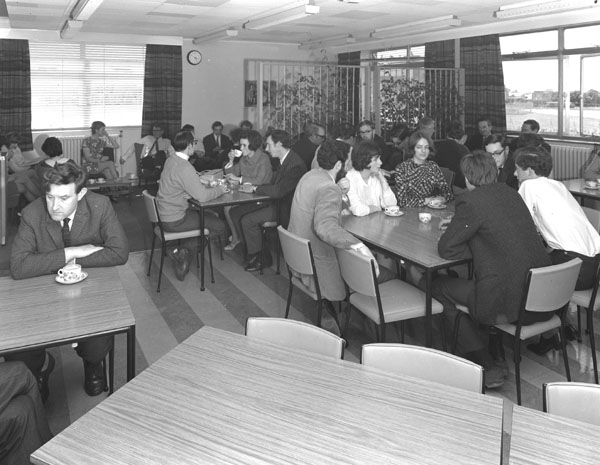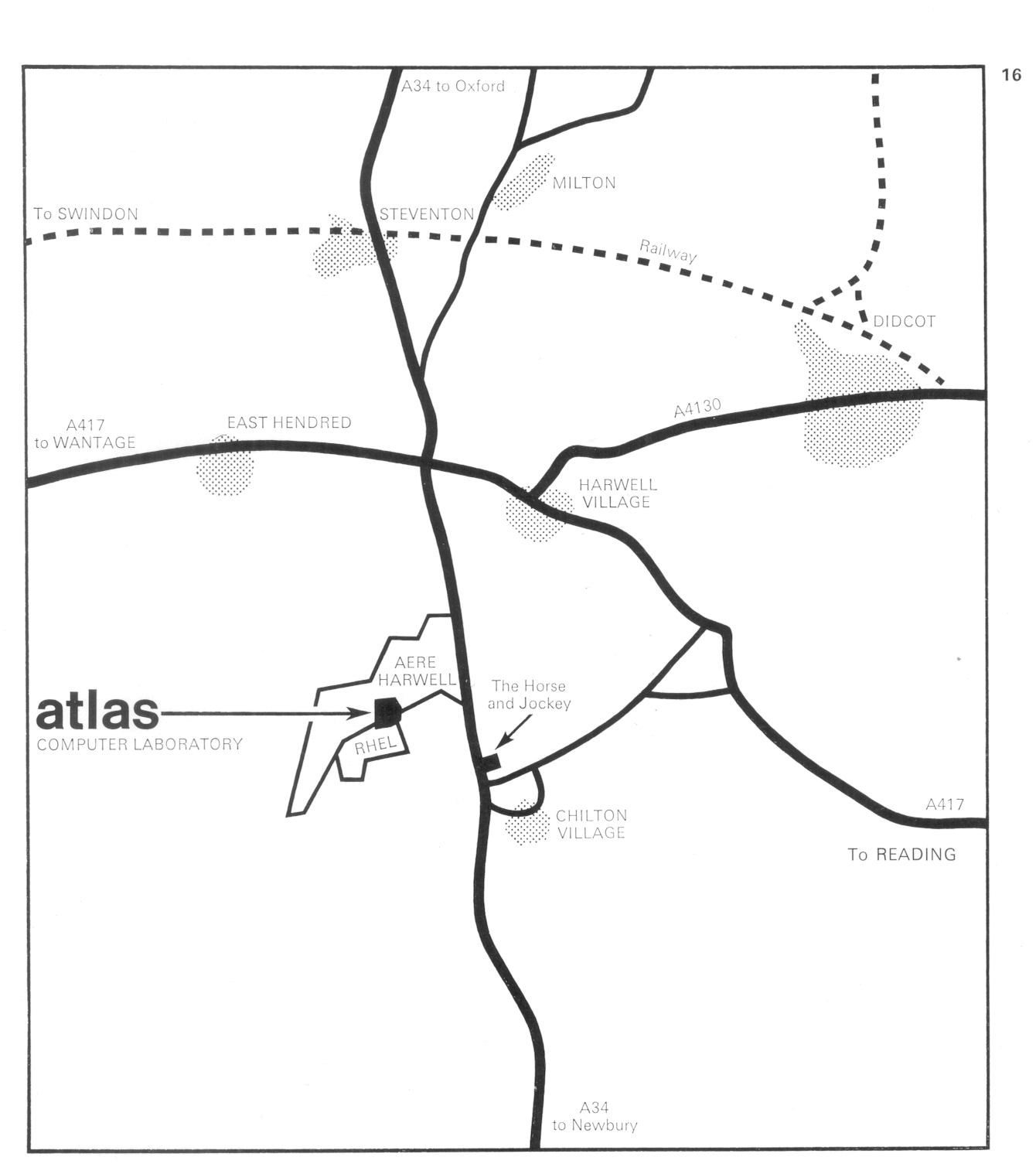

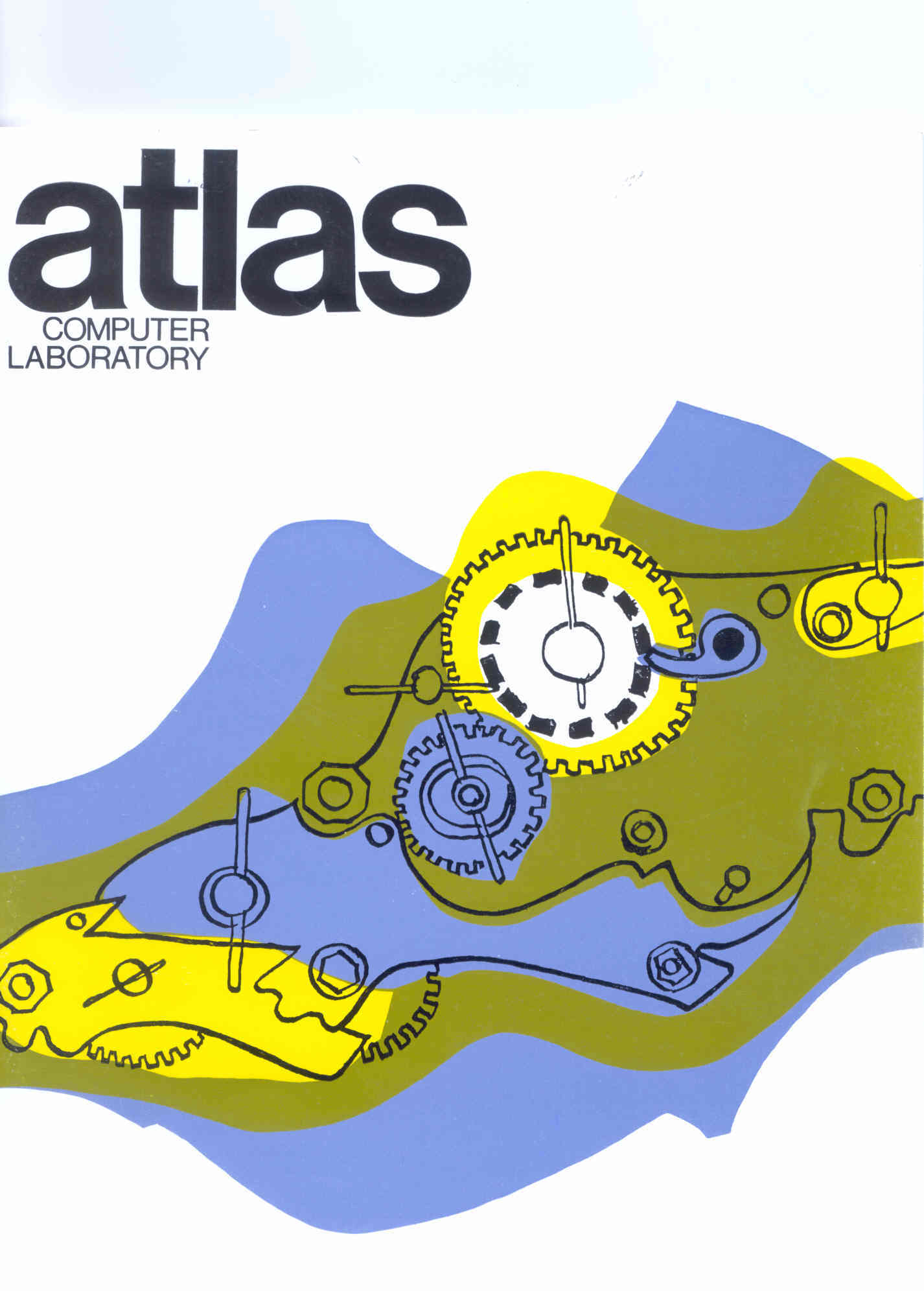
Though initially set up under another scientific body, the Atlas Computer Laboratory has come under the Science Research Council since this was formed on 1st April 1965 within the Department of Education and Science. The same Department administers also the Agricultural, Medical, Natural Environment and Social Science Research Councils. The Laboratory houses the large I.C.T. Atlas computer, which was ordered in 1961, and all the ancillary machinery and supporting services needed to operate a powerful computer efficiently.
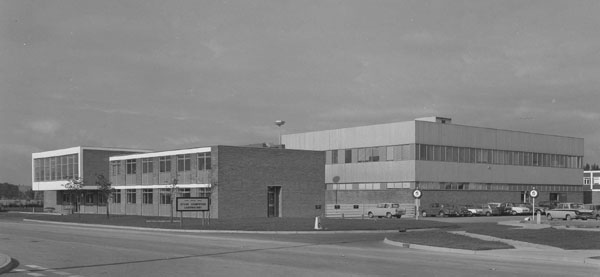
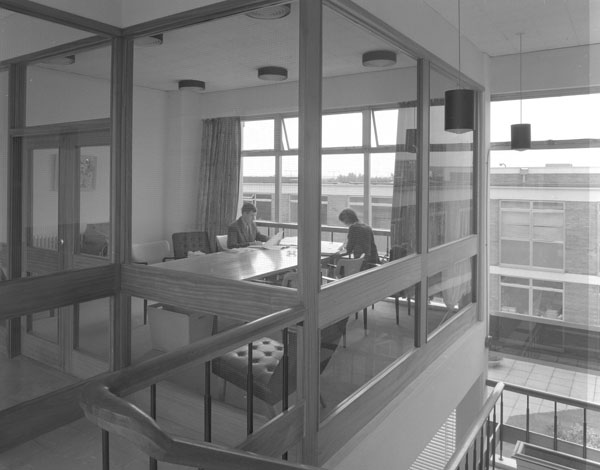
The Laboratory is on the west side of the A34 (Birmingham to Winchester) trunk road, 14 miles south of Oxford, map O.S. 158 (1 inch) reference 480; 865. The nearest station, Didcot (Western Region) is 4 miles away; London Airport is 45 miles away; and the City of Oxford (Nos 12/112 - Oxford to Newbury) buses pass the site. There is a map at the back.
The postal address is
Atlas Computer Laboratory Chilton Didcot Berkshire
Telephone Abingdon 1900 Ext 6296 (Receptionist)
The Laboratory provides a computing service to research workers in all British universities free of charge. It offers this service also to Government and other Treasury-supported research organisations at a charge which works out at roughly £200 an hour. Bodies that are part of the Science Research Council itself, such as the Rutherford High Energy Laboratory and the Radio and Space Research Station, are not charged for this service.
Broadly, the aim is that the Laboratory shall be a place to which the research worker can turn when he has to attack a problem which demands computing power on a greater scale than his local machinery can supply.
In addition to this service work, the Laboratory offers professional help and advice to its users. It supports research projects by means of contracts with universities and by offering Fellowship appointments, and pursues research and development projects of its own.
The organisation of the Laboratory is simple and expresses the needs: to process work through the installation as quickly and efficiently as possible; to provide and maintain (in some cases in collaboration with the makers of the machine, ICT Limited) the software needed in support of this; to keep intellectually alive, and therefore efficient by means of research activities and contracts with outside bodies, notably universities.
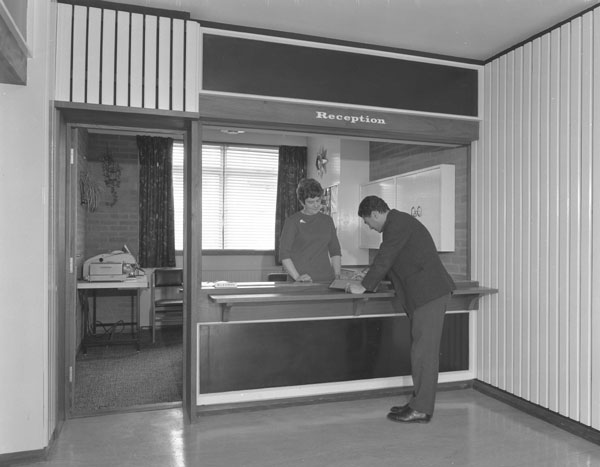
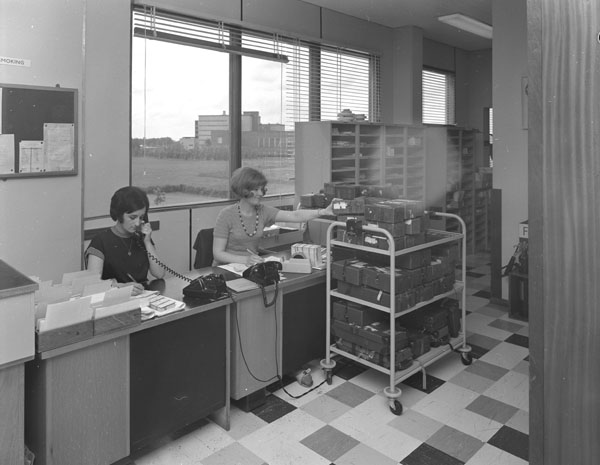
This is the state of the installation at the middle of 1969.
In Plans for the future, there is a note of what future developments are currently envisaged.
N.B. The core and drum store appear to the user as 144K of continuous store.
N.B. The paper tape equipment will handle 5, 7 or 8 track tape, both for input and output.
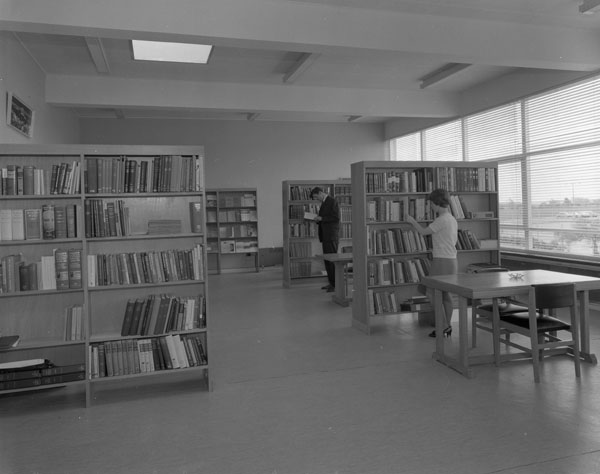
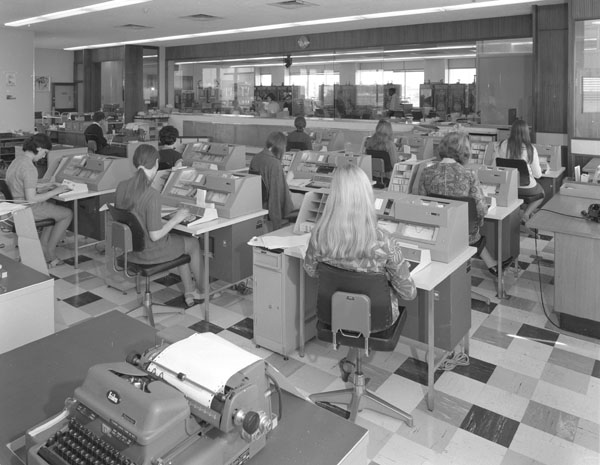
Averaged over a typical day of varied work, the machine obeys instructions at about 350,000 a second.
The times for basic operations are
Floating point addition - 1.8 to 2.2 μsec;
Floating point multiplication - 5.9 μsec;
Organisational instructions - 1.6 to 1.8 μsec.
The times for some complete programs are
Evaluate a polynomial of degree N: 9Nμsec;
Form the scalar product of two vectors each of order N: 13N μsec;
Invert a matrix of order 100: 14 sec;
Find all the eigen values (all complex) of a matrix of order 24: 2 sec;
Sort 5,000 numbers into order: 1 sec.
As a test of the routines for high-precision arithmetic, the machine has calculated π to 5,000 decimal places in 20 mins; square root of 2 to 10,000 decimal places in 14 mins.
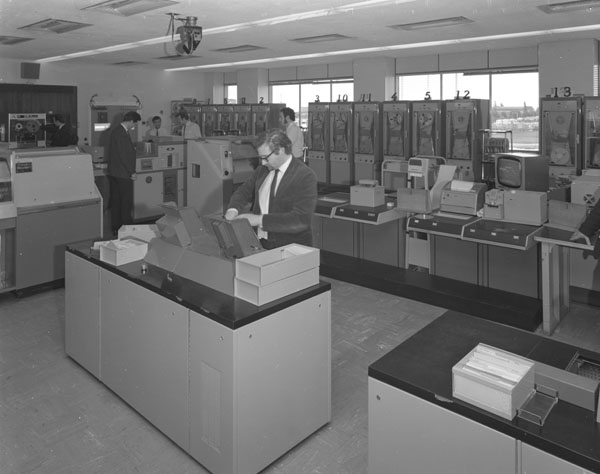
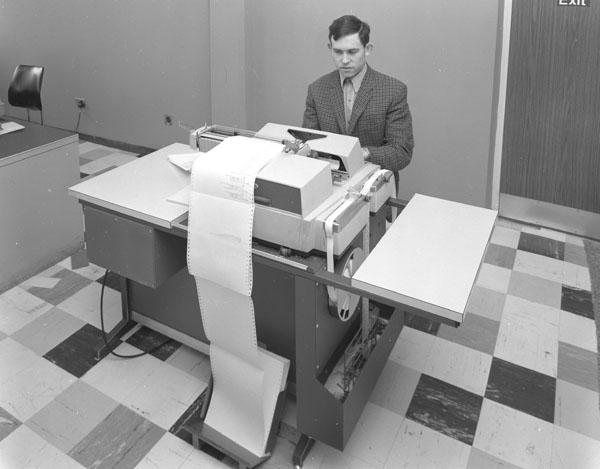
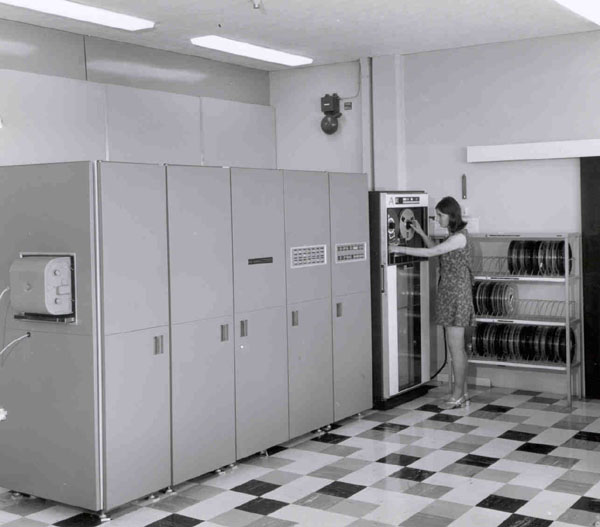
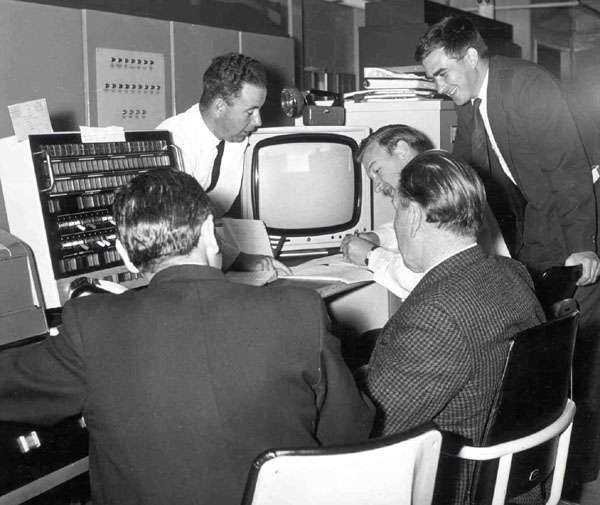
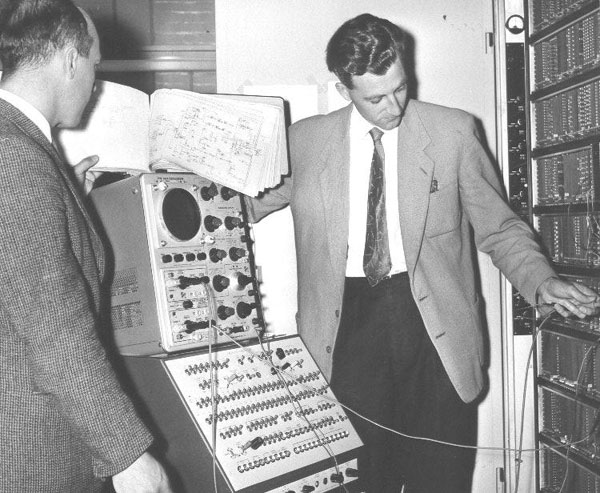
Atlas has an elaborate automatic operating system which takes care of many of the tasks which, with a simpler computer, fall on the machine room staff. This contributes greatly to the speed with which complete jobs can be put through the installation. In particular this system, called the Supervisor, makes it easy to change from one programming language to another and thus to process a succession of jobs written in different languages. Among the 30 or so languages we can accept, the most important are:
The machine is now - Autumn 1969 - working 24 hours a day from 1600 Sunday until 0800 the following Saturday.
Each week we
run 2,500 complete jobs;
read in a million cards and 30 miles of paper tape;
print 2 million lines of output;
punch 30,000 cards;
handle 1,500 reels of magnetic tape.
Of this load, about
75 per cent. comes from universities (we have 600 separate projects on our books and usually work on 200 of these each week);
15 per cent comes from government and similar laboratories - the Meteorological Office has been a regular user from the start and has written programs which stretch the machine to its limits;
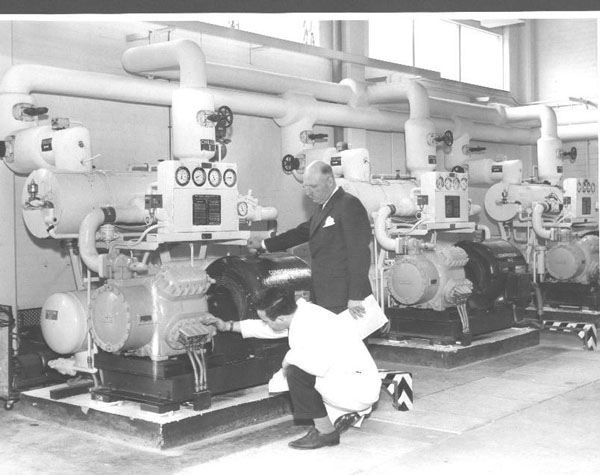
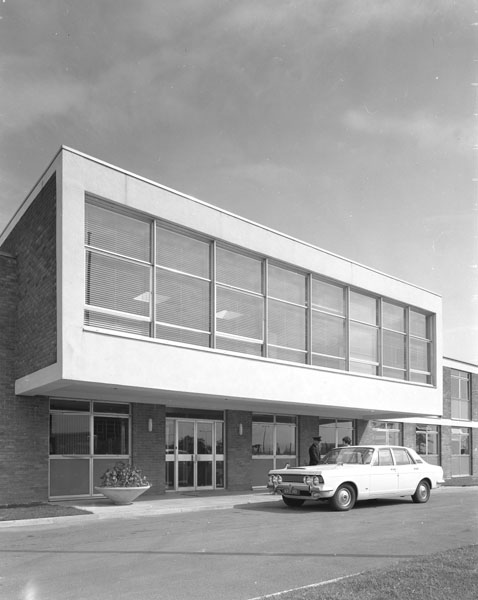
10 per cent. is for the research and development work of the Atlas Laboratory itself.
Almost all fields of study are represented in this work load. Naturally, the physical sciences take most of the time, but there is a significant and increasing use by sociologists, psychologists, economists and others.
The distribution of the university work is roughly
Mathematics 17 per cent. Physics 20 per cent. Chemistry 17 per cent. Engineering 22 per cent. Medical and Biological Sciences 6 per cent Social Sciences 8 per cent. Others 10 per cent.
The value of a typical week's work, at current commercial rates, is about £45,000.
The Laboratory undertakes and supports research in four ways
The Laboratory is now (October 1969) making plans for a large increase in its computing power. As a first step, an ICL 1906A is to be installed in mid-1971. This will have 256K words (24-bit) of 650 ns core store, two fast magnetic drums, each holding 2M characters, a fixed disc of 741M characters, exchangeable disc units and a comprehensive set of peripherals. A number of remote terminal stations - probably six initially - consisting of card reader, line printer and teletype keyboard will be located in universities and other centres and connected to the computer by data transmission lines.
An interactive visual display system consisting of a PDP 15 computer and a VT10 display (all made by Digital Equipment Corporation) will be delivered in the summer of 1970. This will be linked to the 1906A when that is delivered, and also to the SC 4020 microfilm recorder and to a D-MAC graphical input table which will be delivered in late 1969.
A large extension to the computer block will be built to house the new equipment. This should be ready for occupation in May or June of 1971.
